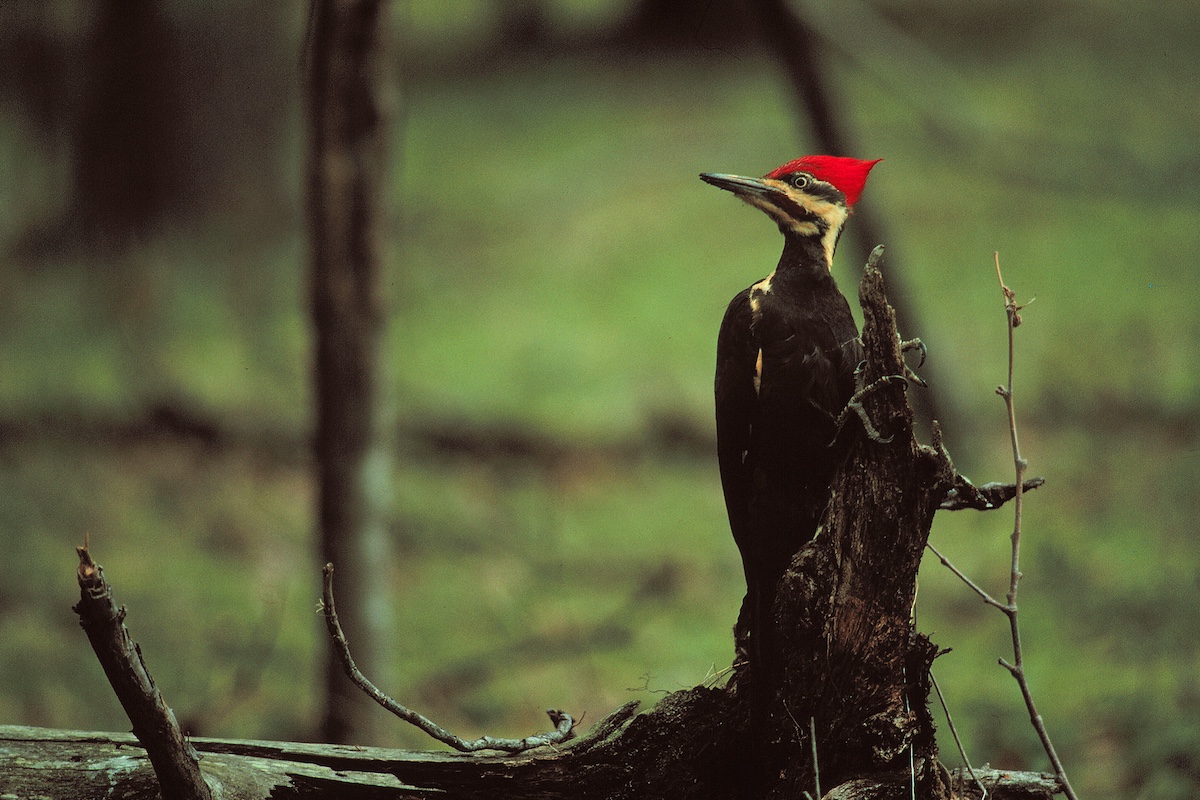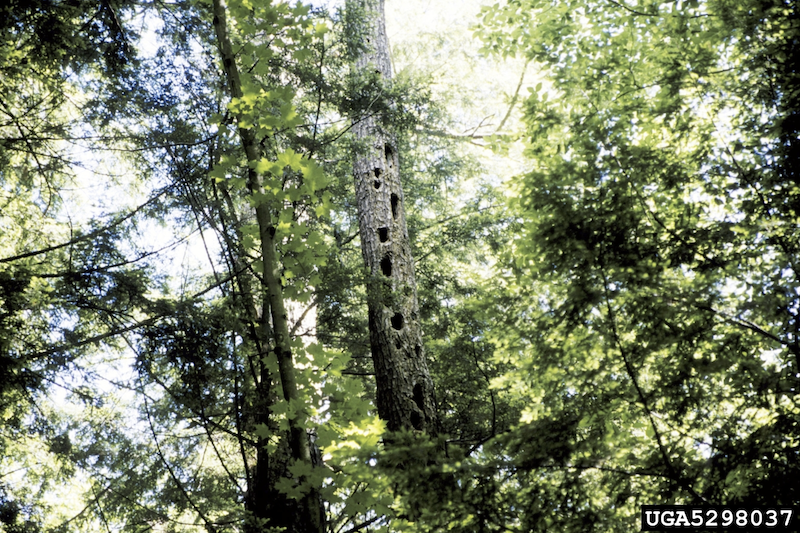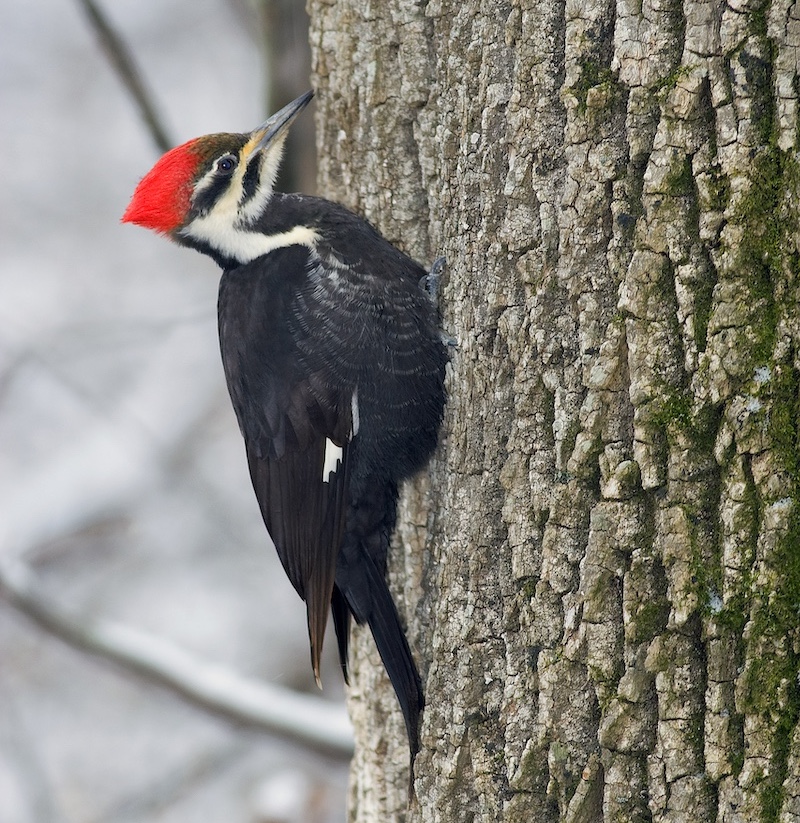
Photo by Michael R Jeffords.



Photo by Michael R Jeffords.
The sight, sound and nesting evidence of one Illinois bird leaves viewers awe inspired. Meet the pileated woodpecker.

The largest woodpecker in Illinois, the pileated woodpecker (Drycopus pileatus), is approximately 16 to 19.5 inches in length. Besides their size, two field marks used to identify pileated woodpeckers are the red crest on the head and the white patches on the underside of the wings. Males have a solid red crest and a red “mustache” while females have a red crest with a black forehead lack the “mustache.”
The crow-sized pileated woodpecker is a year-round resident in Illinois. Like other woodpeckers, instead of singing to attract a mate, the pileated woodpecker typically drums on trees but you also may hear them hammering away on wood siding, TV antennas, gutters and downspouts. Woodpeckers excavate cavities for nesting and winter shelter, and the cavity of the pileated woodpecker is a unique—and large—rectangular shape. Learn more about the seven species of woodpeckers occurring in Illinois at Wildlife Illinois.

The pileated is a reminder of the slightly larger ivory-billed woodpecker that once inhabited cypress–tupelo and oak-gum bottomland forests in southern Illinois. The ivory-billed has been most likely extirpated from the southern United States, although rare, sketchy sightings suggest its possible presence in the most remote areas of the Deep South.
Before European settlement, forests covered about 38 percent, or 13.8 million acres of Illinois. Over a century, between 1820 and 1920, nearly 80 percent of Illinois’ woodlands were eliminated. Woodland habitats have increased in the last 70 years, largely the result of increased plantings and natural succession. In 2017, forests occupied about 15 percent of Illinois’ surface area (Illinois Forest Action Plan).
Several types of woodland habitats exist in Illinois, with the deciduous woodlands the most common type to most people. Deciduous woodlands are closed-canopy woodlands dominated by trees that seasonally lose their leaves, with an understory of shade-tolerant trees, shrubs and herbs. Within the deciduous woodland cover type are upland forests, mesic upland forests, bottomland forests, sand forests, savannas and southern flatwoods.
Bottomland forests are found statewide along streams and a subject to flooding in the spring. Characteristic canopy tree species include silver maple, green ash, hackberry, sycamore, American elm, red elm and black walnut, with elderberry, spicebush and deciduous holly some characteristic understory shrubs.
According to Illinois Department of Natural Resources, more than 75 percent of the wildlife habitat in the state is forest, with more than one‐half of Illinois’ native flora, and one‐half of the threatened or endangered flora, found in these bottomland forests. Among the many animal species that utilize bottomland forest habitats permanently are white‐tailed deer, squirrels, opossums, raccoons, wild turkeys and a variety of species of owls and woodpeckers.
Among the woodland woodpeckers is the largest present in Illinois, the iconic, memorable pileated woodpecker.
Kathy Andrews Wright retired from the Illinois Department of Natural Resources where she was editor of OutdoorIllinois magazine. She is currently the editor of OutdoorIllinois Journal.
Submit a question for the author